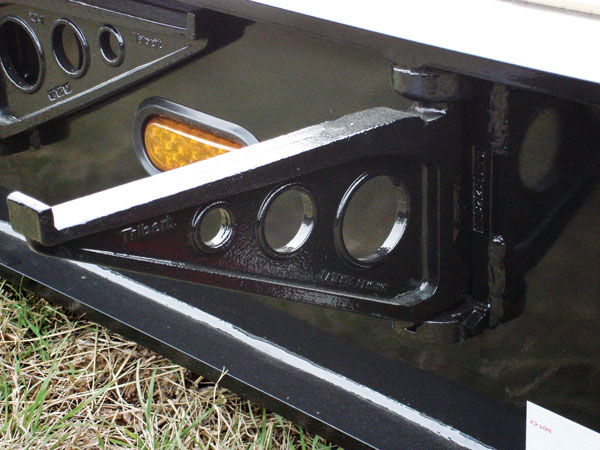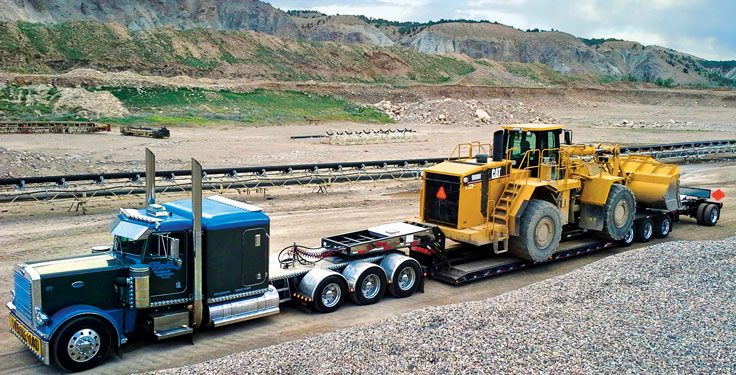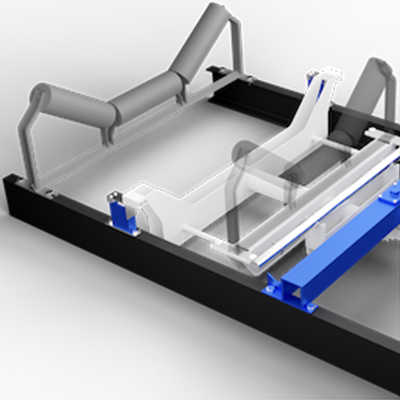Other design features might be less obvious in the dealer lot but make a clear difference with the first load. Perhaps the most misunderstood of these is camber.
Camber is the term used to describe the arc that forms in the center of a well-designed trailer. It helps prevent excessive deflection in the main beams. When properly loaded to capacity, the arc will flatten and result in the trailer’s loaded deck height.
A top-tier manufacturer can adjust camber in custom designs to meet an operator’s specific needs. In general, a trailer that presents a slight upward arc in the center has positive camber, which will flatten with a full load.
In addition to high-quality materials and special in-trailer design features, leading manufacturers might also have a catalog of optional add-ons that allow operators to maximize their capacity and potential.
When is a permit required?

Permits are another area of heavy haul that can cause frustration for operators. Dealers and manufacturers are constantly bombarded with a question like: “What permits do I need to haul X through states Y and Z?”
Unfortunately, there is no easy answer.
In the U.S., a legal load is generally no more than 8 ft., 6 in. wide; 13 ft., 6 in. tall; 48 ft. long; and no more than 80,000 pounds gross weight (including truck, trailer and payload). If a load exceeds one of those areas, it may require a permit.
This doesn’t consider axle weight or other regulations that may vary from state to state. As with capacity rating, there is no nationwide standard for permits. Anything above 80,000 pounds comes under the state jurisdiction, and each state has its own set of rules based on infrastructure, legislation and other regional factors.
Kingpin laws are another example of regulations that change from state to state. Most states along the East Coast have laws that limit the length to 41 ft. from the kingpin to the center of the tandem axle, or 43 ft. to the center of the rear axle on a trailer exceeding 48 ft. There is no specified length for states in the center of the country.
California has the strictest kingpin laws. It requires a permit for anything over 40 ft.
If an operator were to travel from Texas to New York or Oregon to California, they would need to make sure they had permits for every state in which the trailer would be considered oversized. That’s why the intended area of operation is almost as important as capacity when selecting a trailer.
Permits can be quite the quagmire, so in addition to offering their expertise, manufacturers are doing their best to work with end users to design trailers that limit the need for extra permits – all the while adapting to ever-changing equipment.
Telescopic trailers – ones with dual-kingpin settings that can be operated empty without a permit in states with a 43-ft. kingpin law – as well as flip-up and removable axle attachments are just a few examples of versatile designs from manufacturers.
Even these options can require permits, though. Operators are encouraged to work closely with the departments of transportation in their states to ensure each load is properly permitted.
Who can help answer my questions?
In the world of heavy haul, there are easy questions like: “Is it safe to travel with the flip axle down?”
Yes, but there’s a good chance it will put the load over the length and require a permit.
Or: “What is the difference between spread axle and close coupled?”
This has to do with how an additional axle is attached. The additional axle is attached to the rear only on a close-coupled model.
Spread axle configurations allow for more versatility. With a nitro booster, operators can add as many additional axles as the trailer is designed for. The presence of pin tubes is another indication, as pin tubes are required and reinforced for split axle configurations only.
Then, there are those difficult questions that require more thought: “How much can a 55-ton trailer haul?”
A dealer or manufacturer might reply: “Let’s start with what needs to be hauled and where it’s going, and build up from there.”
In an industry where so much is riding on what operators choose to run between the road and the load, taking the time to work through the easy and difficult questions with experienced dealers and manufacturers ensures everyone’s safety – as well as the trailer’s dependability and longevity – as drivers hit the highway.
Troy Geisler is vice president of sales and marketing at Talbert Manufacturing.












